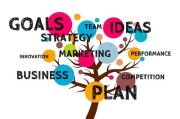What is Google Lens & How Does It Work? Features of Google Lens
Introducing Google Lens, the ultimate tool for unlocking the power of your smartphone's camera! Gone are the days of simply taking pictures and capturing memories. With Google Lens, you can now explore a whole new world of possibilities right from your phone.
What is Google Lens? So, what exactly can you do with Google Lens?
Google Lens is an AI-powered image recognition tool that allows users to search, identify objects, and interact with their surroundings through their device's camera. It can recognize text, products, landmarks, animals, and more, offering useful information or actions based on the identified content.
Well, the answer is endless! This innovative technology is like having a virtual assistant in your pocket, from identifying objects and landmarks to translating text in real-time. Need to know the calorie count of that delicious dessert? Use Google Lens to scan the menu and find out. Want to know more about a famous painting? Simply point your camera and let Google Lens provide you with all the information you need.
Whether you're a travel enthusiast, a foodie, or just someone who loves discovering new things, Google Lens is a game-changer. Join us as we delve into the amazing features and practical uses of Google Lens, and get ready to see the world in a whole new light.
How does Google Lens work?
Google Lens is a powerful image recognition technology that uses artificial intelligence and machine learning to analyze visual information. Here's how it works:
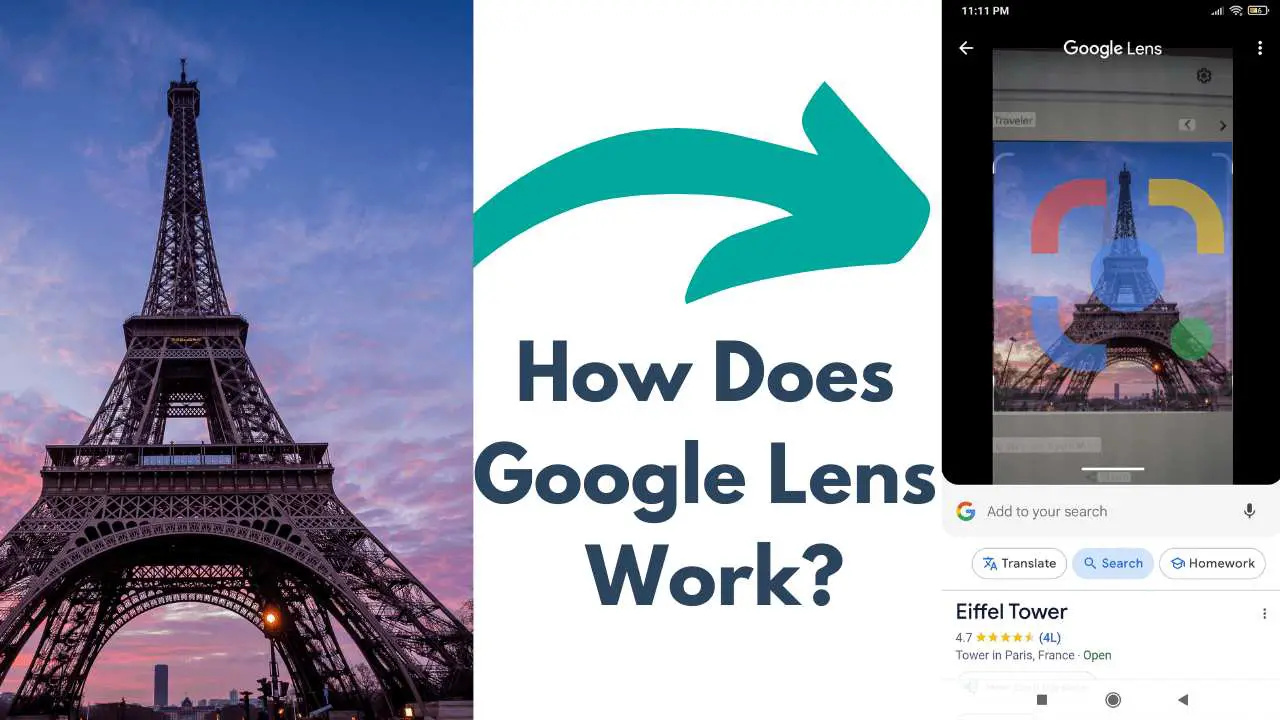
1. Image Capture: Users can either take a photo directly through the Google Lens app or select an existing image from their device.
2. Image Analysis: The app breaks down the image into key elements, identifying objects, text, and other visual features.
3. AI Processing: Google's advanced AI algorithms analyze these elements, comparing them against vast databases of images and information.
4. Context Understanding: The system considers factors like location data and user history to provide more accurate and relevant results.
5. Information Retrieval: Based on its analysis, Google Lens fetches relevant information from various sources, including Google Search, Maps, and other databases.
6. Results Display: The app presents the user with interactive results, such as text translations, product information, or identification of landmarks and objects.
7. User Interaction: Users can then interact with the results, getting more details or taking actions like shopping or saving information.
How to Use Google Lens work?
To make the most of Google Lens, it's essential to know how to use it effectively. Here's a step-by-step guide to accessing and using Google Lens:
A. Accessing and Using Google Lens:
- Open the Google app on your smartphone or tablet.
- Tap on the Lens icon, which resembles a small square with a dot in the middle.
- Point your camera at the object or text you want to analyze.
- Google Lens will automatically recognize the image and provide relevant information.
- Tap on the identified object or text to access additional details, such as product information, translations, or related images.
- Use the available options to interact with the results, such as saving the information or sharing it with others.
B. Tips and Tricks for Optimizing Lens Features:
- Ensure good lighting conditions for better recognition accuracy.
- Capture clear and focused images to improve the accuracy of search results.
- Experiment with different angles and distances for optimal results.
- Explore the various features of Google Lens, such as translating text, identifying plants and animals, or scanning barcodes for product information.
- Keep the app updated to access new features and improvements.
C. Integrating Google Lens with Other Google Services and Apps:
- Use Google Lens within Google Photos to identify objects in your saved images.
- Integrate Google Lens with Google Assistant for voice commands and hands-free usage.
- Utilize Google Lens in Google Maps to explore landmarks and get additional information while navigating.
By following these steps and exploring the different features and integrations, you can make the most of Google Lens and enhance your digital experience.
Features of Google Lens
When it comes to exploring Google Lens's cutting-edge features, it's hard not to get excited. This remarkable tool takes visual search to a whole new level, empowering you to discover and interact with the world around you in ways you never thought possible.
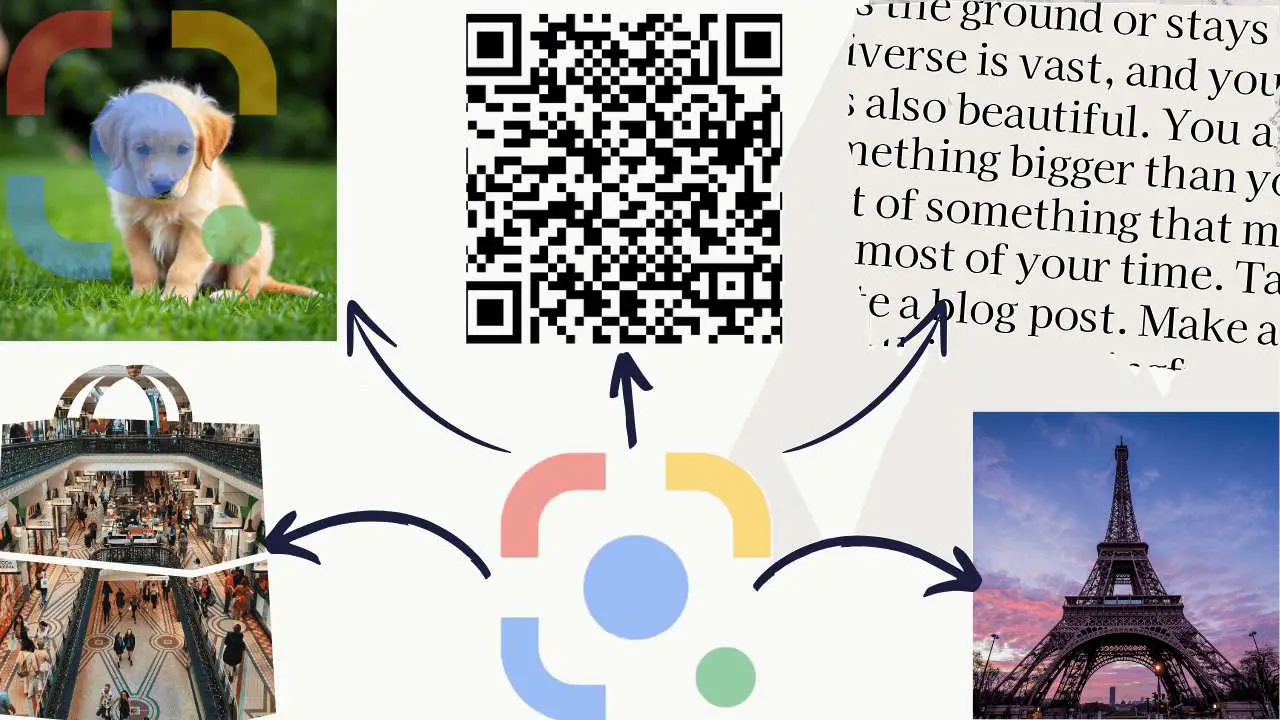
A. Visual Search Capabilities
i. Object Recognition
One of the standout features of Google Lens is its object recognition capability. Simply point your camera at an object, and Google Lens will instantly provide you with detailed information about it. From identifying plants and animals to recognizing famous landmarks, this feature is perfect for satisfying your curiosity and expanding your knowledge.
ii. Text Recognition and Translation
But Google Lens doesn't stop there. It also offers text recognition and translation, allowing you to effortlessly translate foreign text in real-time. Whether you're traveling to a new country or trying to decipher a menu in a foreign language, Google Lens has got you covered.
iii. Barcode and QR Code Scanning
And let's not forget about barcode and QR code scanning. With Google Lens, you can easily scan barcodes to compare prices or access product information, while QR codes can be instantly decoded to reveal hidden content or provide seamless access to websites and apps.
B. Product Identification and Shopping
With Google Lens, you can easily identify products and obtain relevant information about them. Simply point your camera at an item, and Google Lens will provide you with details such as prices, reviews, and similar products. It's like having a personal shopping assistant at your fingertips, streamlining your decision-making process and making online shopping a breeze.
C. Landmark Recognition and Information
When it comes to exploring the world's landmarks, Google Lens is your trusty tour guide. By capturing an image of a famous landmark, Google Lens can instantly provide you with historical information, interesting facts, and even nearby attractions. It's the perfect companion for travelers and history enthusiasts, allowing you to learn and appreciate the world's wonders in a whole new way.
D. Image Analysis and Assistance
Furthermore, Google Lens boasts image analysis and assistance capabilities. Need help with home decor? Simply snap a photo of a furniture piece, and Google Lens can help you find similar styles and suggest where to purchase them. It can also assist in recognizing objects and providing relevant information, making it a versatile tool for enhancing your daily life.
Practical Applications of Google Lens
Google Lens is not just a fancy tool; its real-life applications are truly remarkable. Let's explore some of the practical use cases where Google Lens can make a significant impact in our day-to-day lives.
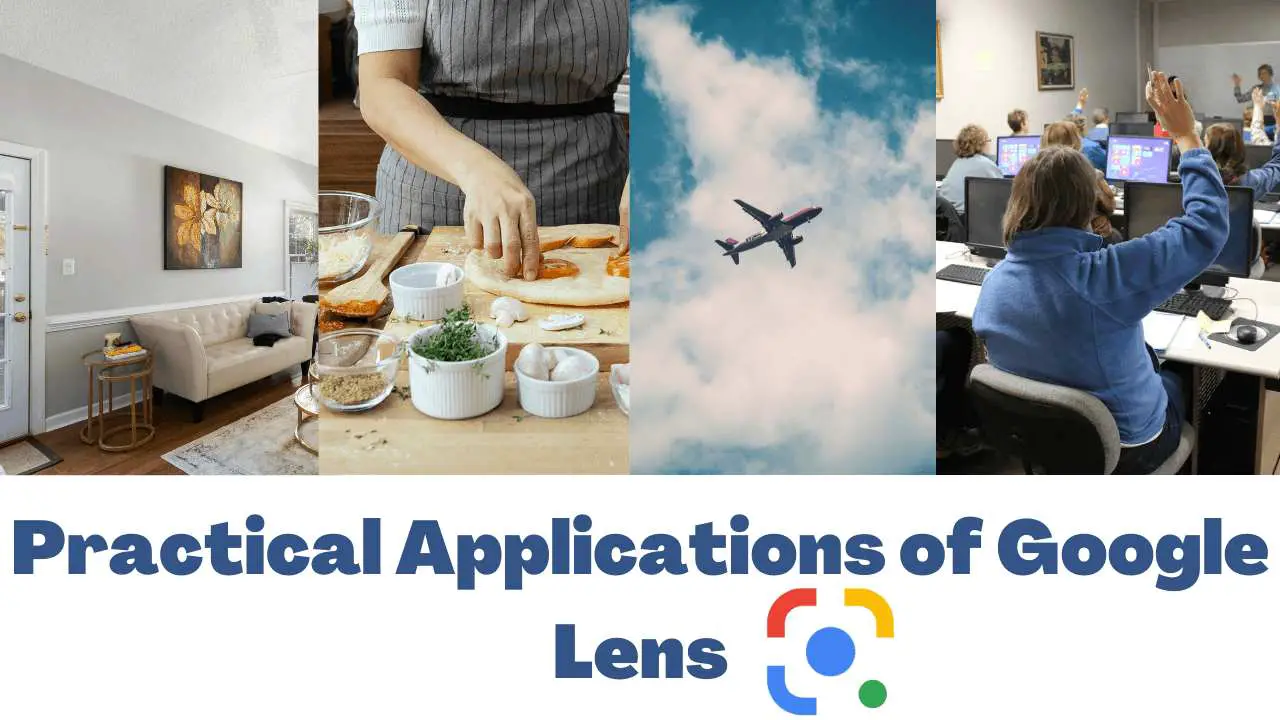
1. Home and Interior Design Ideas
Firstly, Google Lens can be a game-changer for home and interior design enthusiasts. Say you come across a stunning piece of furniture in a magazine or a friend's house—simply use Google Lens to capture the image, and it will provide you with similar styles, prices, and purchasing options. It's like having a personal interior designer in your phone, helping you find the perfect pieces for your dream home.
2. Cooking and Recipe Assistance
Secondly, Google Lens is a valuable assistant in the kitchen. You can use it to scan ingredients and get access to detailed recipes, cooking tips, and nutritional information. It's a handy tool for those looking to expand their culinary repertoire or simply seeking inspiration for their next meal.
3. Travel and Exploration Guidance
When it comes to travel and exploration, Google Lens is your ultimate guide. By capturing images of landmarks or signs, it can provide you with historical information, translations, and nearby attractions. It takes the guesswork out of exploring new places, allowing you to immerse yourself in the local culture and make the most of your travel experiences.
4. Educational and Learning Tools
Lastly, Google Lens is a valuable educational tool. Students can use it to scan textbooks, solve math problems, and access additional learning resources. It's a fantastic way to enhance the learning process and engage with educational content more interactively and dynamically.
Google Lens offers many real-life applications that can simplify and enhance various aspects of our lives. From home design to cooking assistance, travel guidance to educational tools, Google Lens is a versatile tool that can truly revolutionize the way we live, learn, and explore.
How Google Lens is Transforming Different Industries and Professions?
The impact of Google Lens extends far beyond personal use, as it has the potential to revolutionize various industries and professions. Let's explore some of the areas where Google Lens can make a significant impact.
1. Retail and E-commerce
Firstly, in the retail and e-commerce industry, Google Lens can enhance the customer experience by providing instant product information, reviews, and similar product suggestions. This feature can help retailers boost sales and improve customer satisfaction, as it simplifies the purchasing process and empowers consumers to make informed decisions.
2. Education and Research
In the field of education and research, Google Lens can be a powerful tool for students and researchers. It can help with quick access to relevant information, assist in language translation, and even provide interactive learning experiences. This technology can streamline the learning process and drive innovation in educational institutions.
3. Tourism and Hospitality
For the tourism and hospitality industry, Google Lens can serve as a virtual tour guide. By recognizing landmarks and providing historical information, it enhances the travel experience for tourists. Additionally, it can assist hotel staff in providing personalized recommendations, translating menus, and enhancing customer service.
4. Healthcare and Medicine
In healthcare and medicine, Google Lens has the potential to be a game-changer. It can aid in the identification of medicines, provide dosage instructions, and offer additional medical information. Doctors and healthcare professionals can utilize this tool to access patient information and assist in diagnosis and treatment.
Advantages and Limitations of Google Lens
Google Lens offers several advantages that make it a valuable tool for users:
A. Benefits of Using Google Lens:
- Instant information: Google Lens provides quick access to relevant information about objects, landmarks, products, and text.
- Simplified tasks: It simplifies tasks such as language translation, barcode scanning, and identifying plants and animals.
- Enhanced productivity: Google Lens can save time by providing instant answers and eliminating the need for manual searches.
- Improved learning: It can assist students and researchers with quick access to information, translations, and interactive learning experiences.
- Enhanced customer experience: In industries like retail and tourism, Google Lens can enhance the customer experience by providing product details, recommendations, and virtual tour guides.
B. Challenges and Constraints:
- Accuracy limitations: Google Lens may not always accurately identify objects or provide accurate translations, especially in complex or uncommon scenarios.
- Language limitations: It may not support all languages, limiting its effectiveness in multilingual environments.
- Data availability: Google Lens relies on access to a vast database of information, which may not be comprehensive or up-to-date in all cases.
- Device compatibility: Some features of Google Lens may only be available on certain devices, limiting its accessibility.
C. Comparison with Similar Technologies:
Google Lens faces competition from similar technologies such as Amazon's Rekognition and Microsoft's Seeing AI. Each technology has its own strengths and weaknesses, with Google Lens excelling in its integration with the Google ecosystem and its extensive database of information. However, it may lag behind in certain areas, such as accessibility features for visually impaired users, where Microsoft's Seeing AI has an advantage.
Overall, Google Lens remains a versatile and powerful tool, but users should consider their specific needs and compare it with alternative options to determine the best fit.
Future Trends and Developments of Google Lens
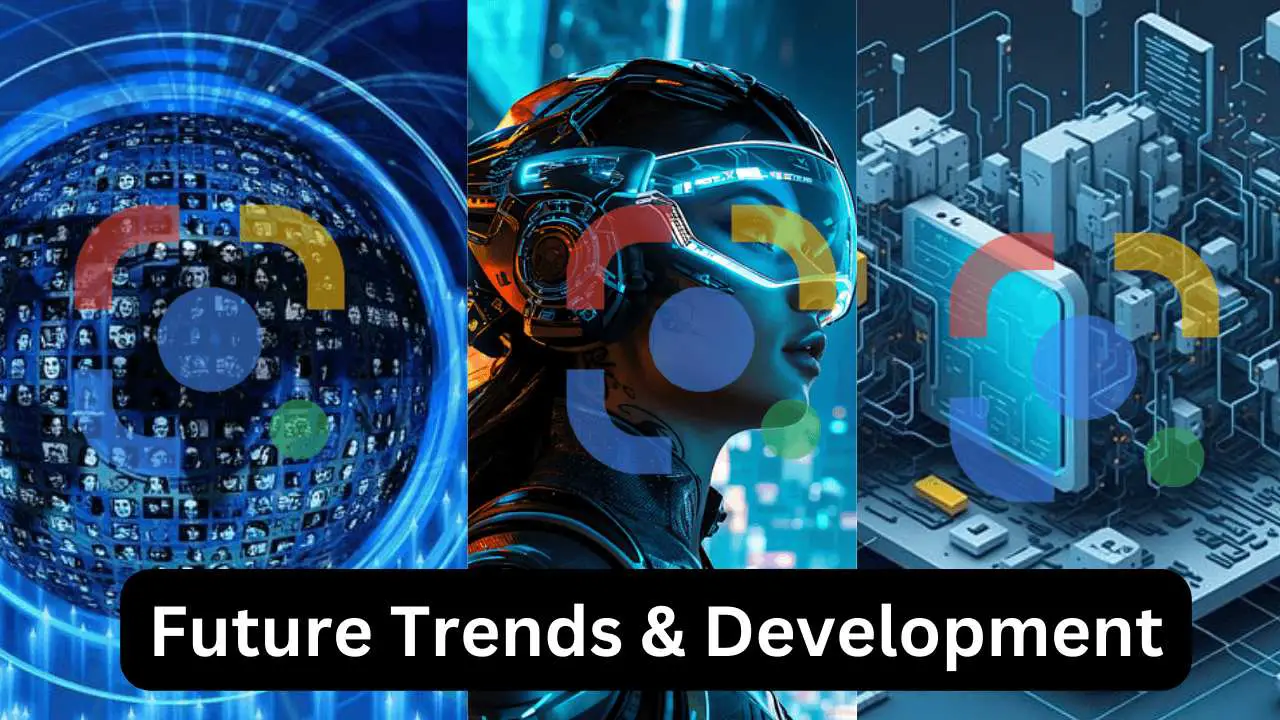
The future of Google Lens holds exciting possibilities, with several trends and potential developments on the horizon:
A. Innovations and Enhancements in Google Lens:
- Improved accuracy and recognition capabilities: Google is likely to continue refining its image recognition algorithms, enhancing the accuracy and speed of object identification.
- Expanded language support: Google Lens may expand its language support, enabling users to translate and interact with text in a wider range of languages.
- Augmented reality (AR) integration: Google Lens could integrate AR technology, allowing users to overlay information and interactive elements onto real-world objects.
B. Predictions for Future Applications and Improvements:
- Enhanced shopping experiences: Google Lens could provide users with personalized product recommendations, pricing comparisons, and real-time availability information to enhance their shopping experiences.
- Enhanced education and learning: Google Lens may evolve to offer more interactive and immersive learning experiences, enabling students to explore subjects more engagingly.
- Advanced accessibility features: Google Lens could introduce more features to assist visually impaired users, such as improved text-to-speech capabilities and audio descriptions.
C. Integration with Emerging Technologies:
- Internet of Things (IoT) integration: Google Lens could integrate with IoT devices, allowing users to interact with and control smart appliances and gadgets using visual cues.
- Integration with voice assistants: Google Lens may further integrate with voice assistants like Google Assistant, enabling hands-free interaction and seamless user experiences.
- Collaboration with other emerging technologies: Google Lens could collaborate with technologies like virtual reality (VR) and machine learning to provide more immersive and intelligent experiences.
As Google continues to innovate and invest in Lens, we can expect exciting developments that will further enhance its functionality, usefulness, and integration with emerging technologies.
Privacy and Security Considerations of google lens
- Data collection: Google Lens may collect and analyze user data to improve its services, including images and text scanned by the app. Users should be aware of the information they share and review Google's privacy policies.
- User consent: Users should ensure they have given appropriate consent for Google Lens to access their camera, photos, and other device features.
- Data storage: It is important to understand how and where data captured by Google Lens is stored and protected.
- Potential security risks: As with any technology, there may be security vulnerabilities that could be exploited. Regular updates and security measures should be implemented to mitigate risks.
- User control: Users should have control over the data they share and be able to manage their settings and preferences within the app.
- Third-party integration: When using Google Lens in conjunction with other apps or services, users should review the privacy and security practices of those third parties as well. By being mindful of these considerations, users can enjoy the benefits of Google Lens while protecting their privacy and ensuring their data remains secure.
Conclusion
In conclusion, Google Lens is an innovative tool with a promising future. Its potential developments include improved accuracy, expanded language support, and integration with emerging technologies like augmented reality and the Internet of Things. However, users should also consider privacy and security considerations when using Google Lens, by staying informed and maintaining control over their data, users can make the most of this powerful visual search tool while safeguarding their privacy and security.
